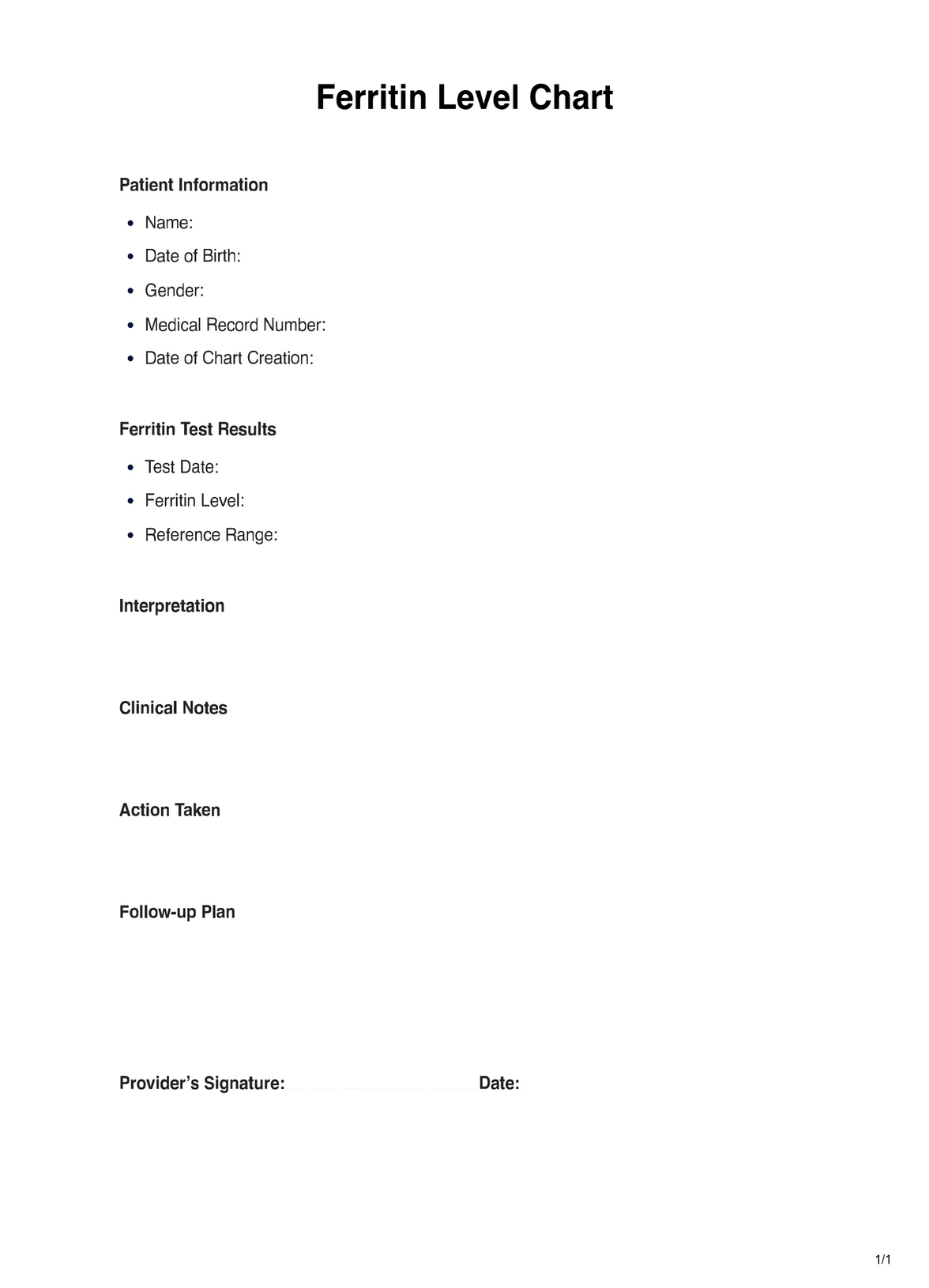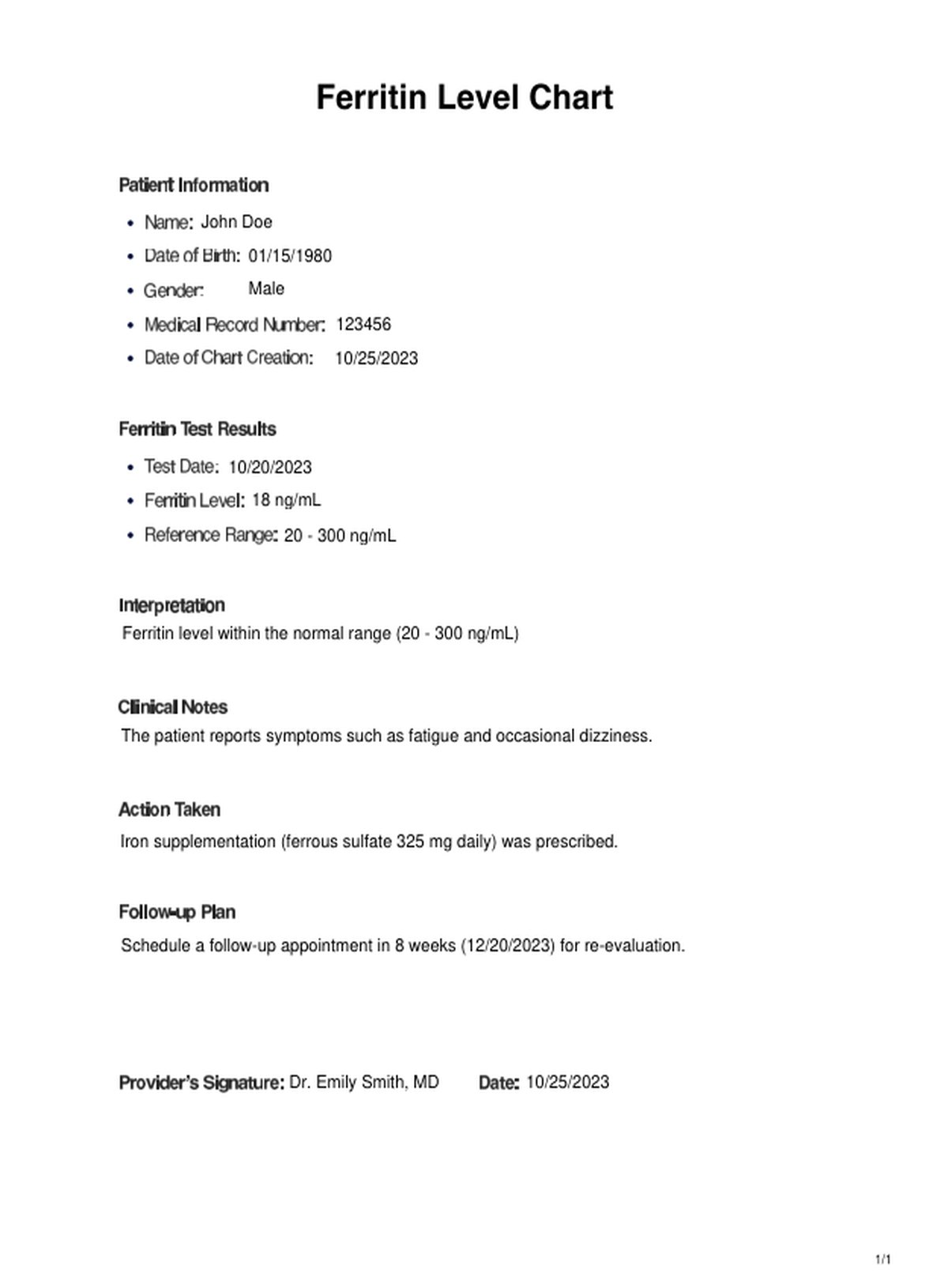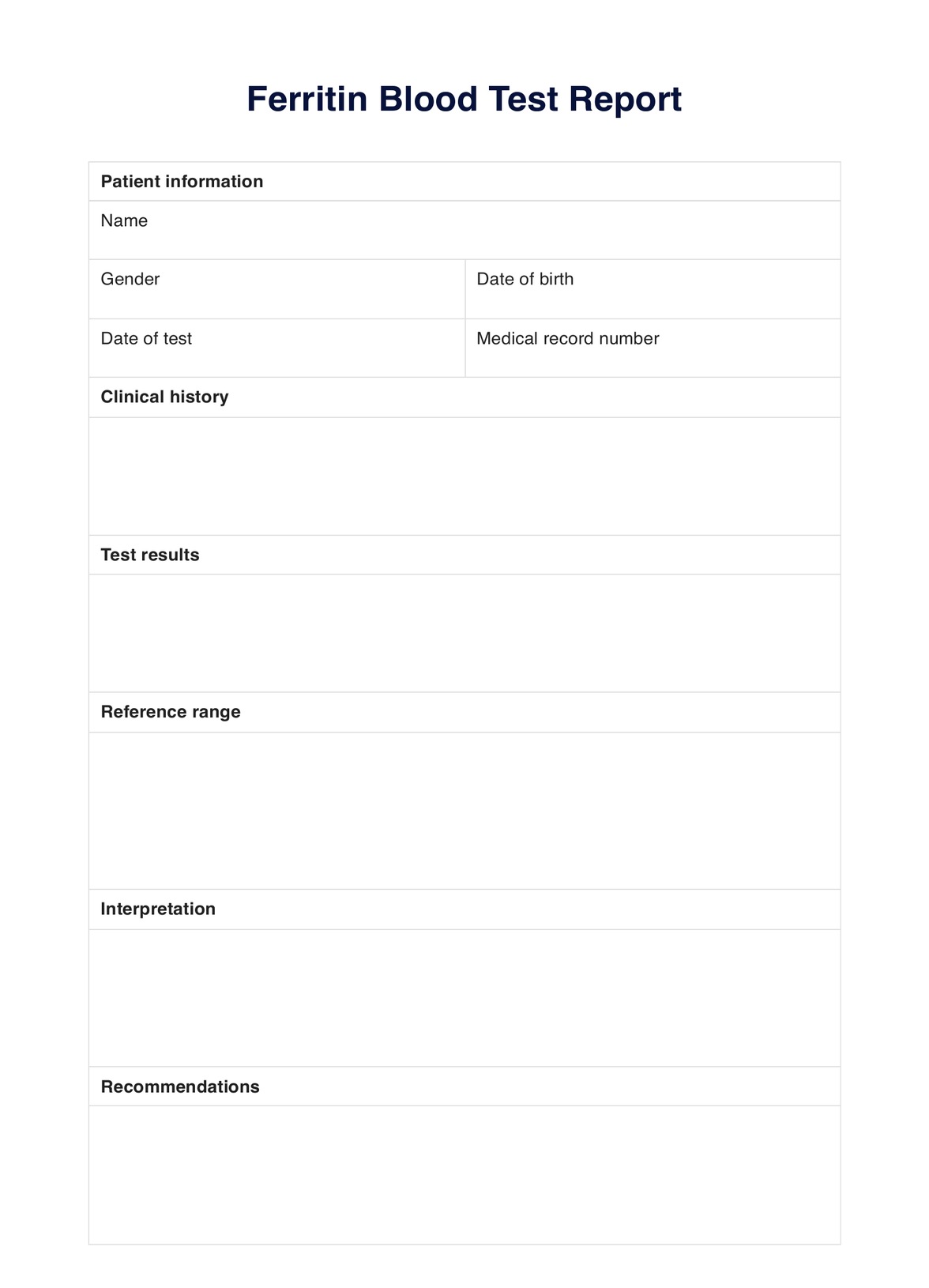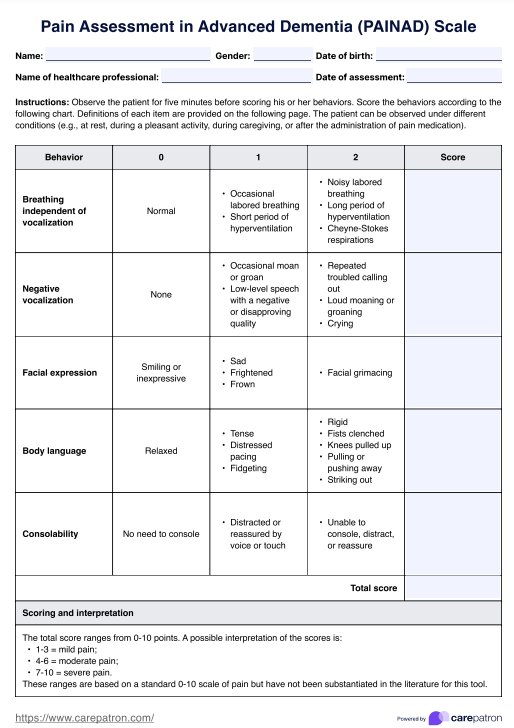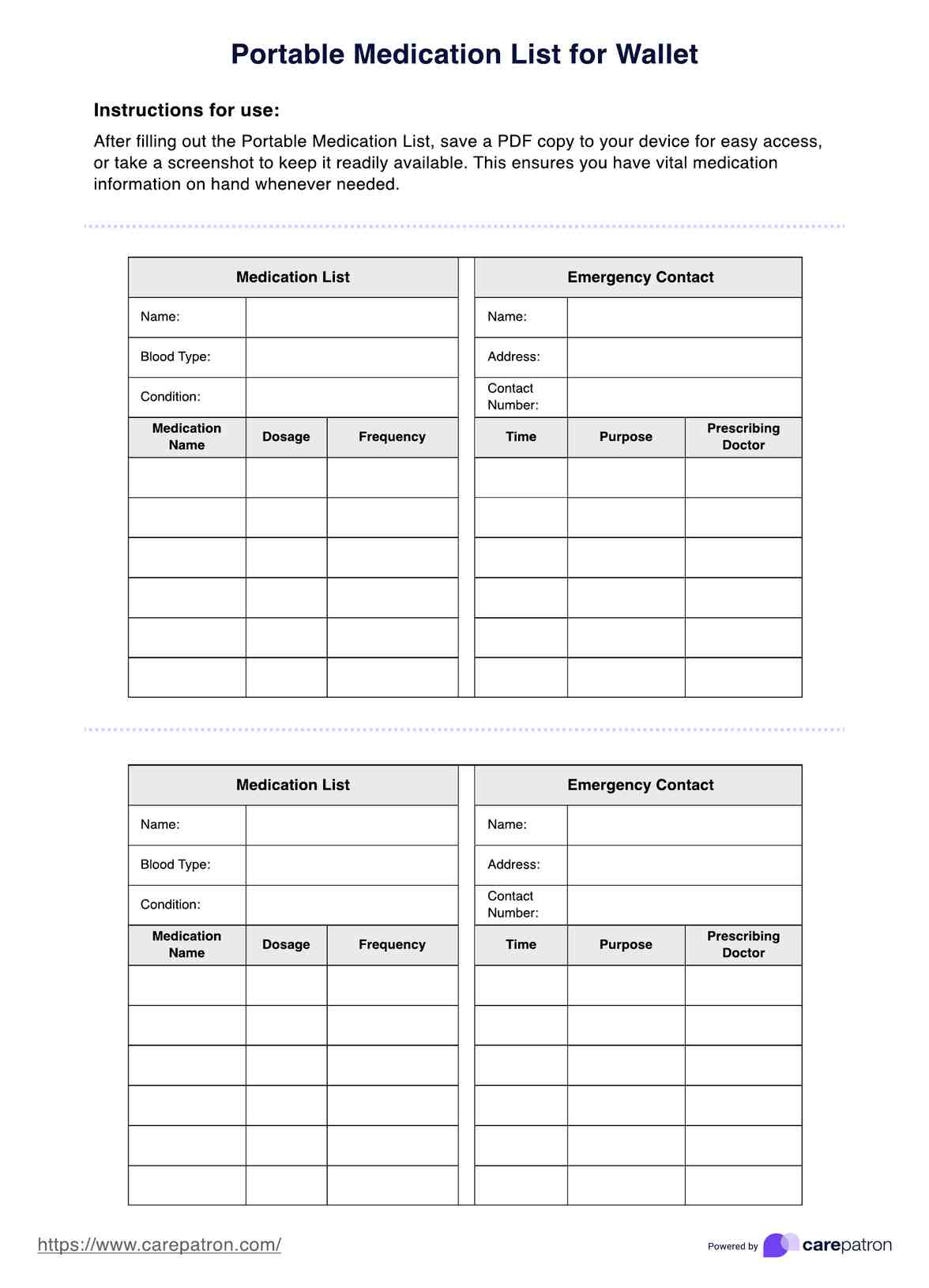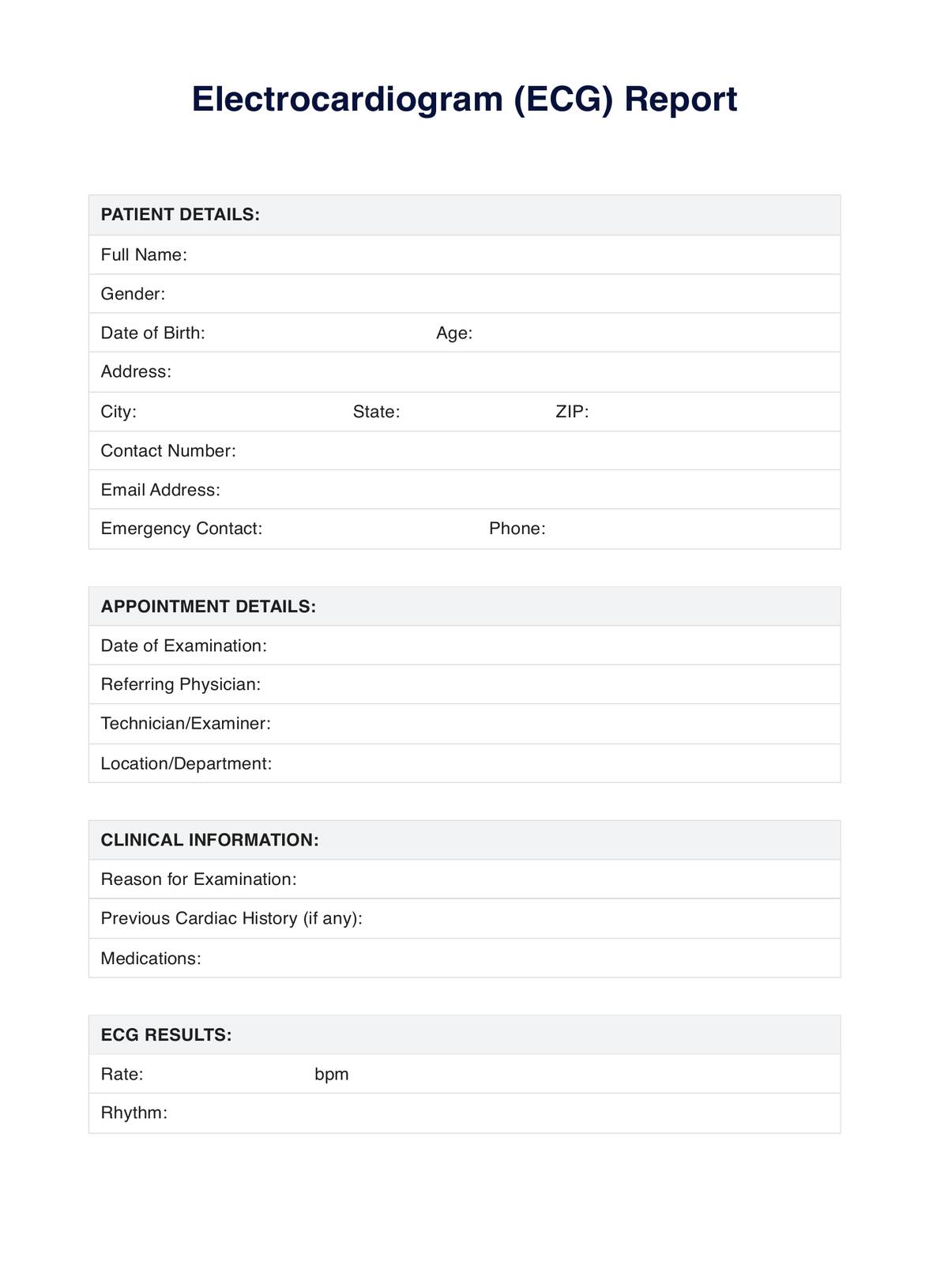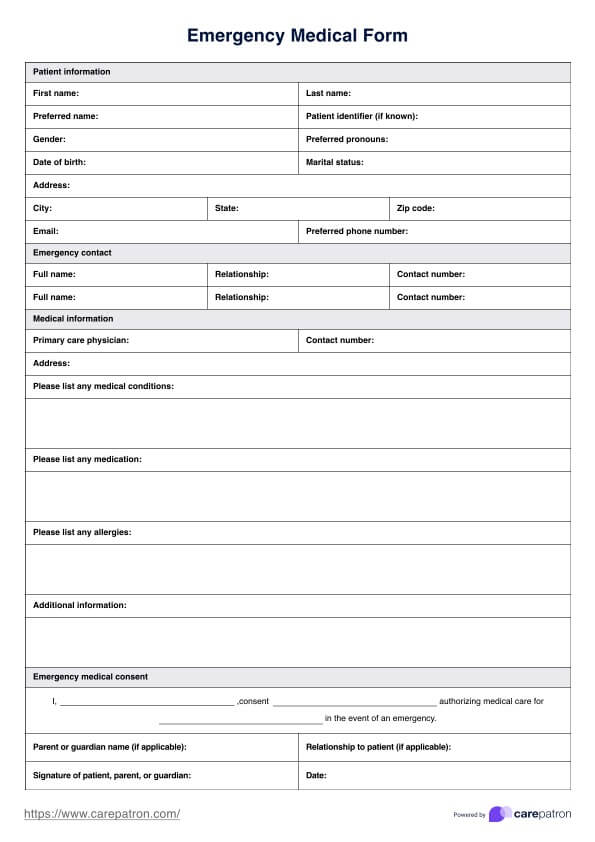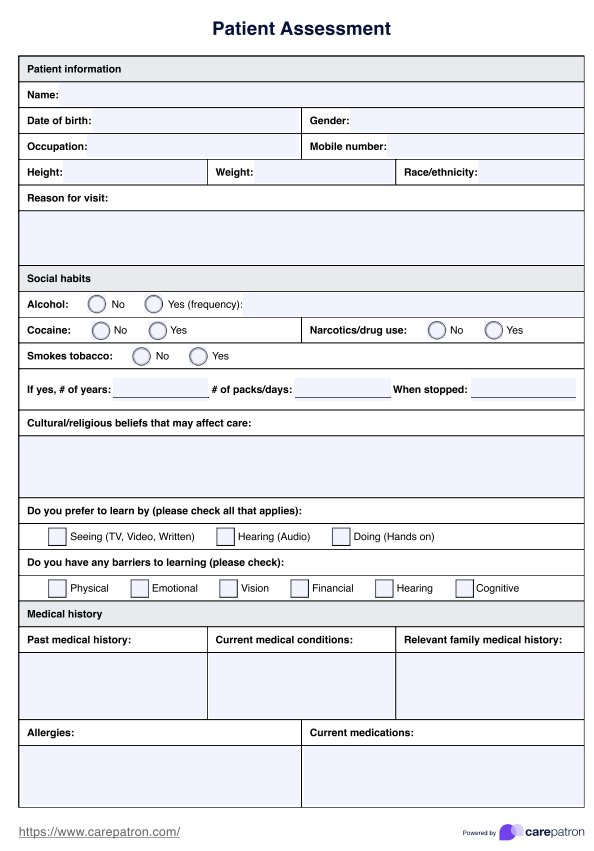Ferritin Level
Monitor iron status effectively with our Ferritin Level Chart�??a valuable tool for healthcare professionals.


What are Ferritin Levels?
Ferretin is a protein found inside cells that stores iron. The body's ferritin level can provide valuable information about a person's iron stores and overall health. This article will discuss ferritin levels, their importance, and how to interpret ferritin blood test results.
Ferritin levels are essential because they can indicate the presence of iron deficiency or iron overload in the body. Iron deficiency anemia, a condition lacking healthy red blood cells due to insufficient iron, is one of the most common causes of low ferritin levels. On the other hand, high ferritin levels may indicate excess iron in the body, which can be caused by conditions such as liver disease or iron overload disorders.
Understanding ferritin blood tests
A ferritin blood test measures the amount of ferritin in the blood, usually measured in nanograms per milliliter (ng/mL) or micrograms per liter (mcg/L). The normal range for ferritin levels can vary depending on age, gender, and ethnicity.
In general, however, the normal ferritin levels for men are between 24-336 ng/mL, and women's are between 11-307 ng/mL. It is essential to note that these values may differ slightly depending on the laboratory and the specific reference range they use.
Using a Ferritin Level Chart
To better understand ferritin blood test results, doctors may use a ferritin level chart as a reference. This chart plots the ferritin levels against other blood tests, such as total iron binding capacity (TIBC) and serum iron levels, to provide a more comprehensive picture of a person's iron status. By comparing these values, doctors can determine if an iron deficiency or overload is present.
Low ferritin levels may suggest iron deficiency anemia, while high ferritin levels may indicate excess iron in the body. However, these results should be interpreted cautiously as other factors besides iron status can also affect ferritin levels.
For instance, inflammation or infection can cause a rise in ferritin levels due to the body's immune response. In such cases, doctors may need to consider other blood tests and medical history to determine the cause of abnormal ferritin levels.
Ferritin Level Template
Ferritin Level Example
How does this ferritin blood level chart work?
1. Obtain the chart
Start by obtaining a printable ferritin level chart. These charts are often found on medical websites, healthcare provider offices, or medical textbooks. Ensure the chart is up-to-date and includes the relevant reference values to your region.
2. Understand the units
Check whether the chart is in nanograms per milliliter (ng/mL) or micrograms per liter (g/L). Make sure you understand the units used in the chart to avoid misinterpretation.
3. Collect test results
If you have recent ferritin level test results, gather this information. Ferritin levels are typically measured through a blood test, so have your laboratory report ready.
4. Identify your level
Locate the reference range on the chart, usually marked by a shaded area or specific values. It typically ranges from 20 to 300 ng/mL. Find the value closest to your ferritin level within this range.
5. Interpret your status
Determine whether your ferritin level falls within the normal range. If it does, your iron storage is considered adequate. If it's below the normal range, you may be iron deficient. If it's above, there could be an iron overload concern.
6. Consider clinical context
Remember that when interpreting ferritin levels, you should consider the patient's circumstances. Symptoms, medical history, and other blood tests like hemoglobin levels are essential to assess iron status accurately.
7. Seek medical advice
If your ferritin levels are outside the normal range or if you have concerns about your iron status, it is essential to consult a healthcare professional. They can provide a comprehensive evaluation and recommend appropriate treatment or dietary changes.
A ferritin level chart can provide insights into your iron status, but it's only a tool for initial assessment. A healthcare provider's expertise is necessary to evaluate and manage iron-related issues properly.
When would you use this chart?
A ferritin level chart is a valuable resource primarily used by healthcare professionals in clinical settings and individuals who want to monitor their iron status. Here are situations and contexts where you might use a ferritin-level chart:
- Iron deficiency diagnosis: Medical practitioners use ferritin level charts to diagnose iron deficiency, a condition characterized by low ferritin levels. This is crucial in anemia, unexplained fatigue, and other iron deficiency-related symptoms.
- Anemia management: Hematologists and primary care physicians rely on ferritin levels to guide treatment for anemia. When hemoglobin levels are low, a low ferritin level supports the diagnosis of iron-deficiency anemia.
- Iron overload assessment: For individuals with hereditary hemochromatosis or thalassemia, ferritin level charts help monitor iron overload. High ferritin levels indicate the potential for iron accumulation in organs.
- Dietary guidance: Nutritionists and dietitians may use ferritin level charts to provide nutritional recommendations for individuals with iron-deficiency anemia. By understanding ferritin levels, they can tailor iron-rich food suggestions.
.png)
What do the results mean?
Interpreting ferritin level results is essential for understanding an individual's iron status. A free ferritin level chart can help in comprehending these results, and here's what expected ferritin level outcomes typically mean:
- Iron deficiency: Ferritin levels below the normal range (usually under 20 ng/mL) strongly indicate iron deficiency. This may lead to anemia, causing fatigue, weakness, and pale skin. Dietary changes or iron supplementation may be recommended.
- Adequate iron storage: Ferritin levels falling within the standard range (typically 20 to 300 ng/mL) suggest that iron stores are sufficient to meet the body's needs. This is a desirable result, indicating a reduced risk of anemia.
- Iron overload: Elevated ferritin levels above the normal range can indicate iron overload or hemochromatosis. High ferritin may also be related to chronic inflammatory conditions, liver disease, or excessive iron supplementation.
It's crucial to interpret ferritin results regarding the individual's overall health. A person with normal ferritin levels experiencing anemia symptoms may have another underlying condition. Conversely, someone with slightly low ferritin levels who is asymptomatic may not require immediate intervention.
It's important to consider gender and age differences when interpreting ferritin levels. Adult men tend to have higher ferritin levels than women, and children may have different reference ranges.
Other helpful resources for healthcare professionals
At Carepatron, we understand the importance of staying informed and up-to-date on medical topics. Here are some additional resources for healthcare professionals to further their knowledge about ferritin levels and iron deficiency:
Research & evidence
The concept of ferritin, an intracellular protein that stores iron, was first discovered in the 1930s. It was initially seen as a marker for iron storage within cells, especially in the liver and spleen.
As the understanding of iron metabolism and its clinical significance grew, ferritin levels were recognized as a valuable indicator of an individual's iron status. Researchers and clinicians sought to establish reference ranges for ferritin to aid in diagnosing and managing iron-related disorders.
A considerable body of research has explored the role of ferritin in health and disease. Studies have shown the correlation between low ferritin levels and iron deficiency anemia, emphasizing ferritin's importance in assessing iron status.
Research has also discovered the relationship between elevated ferritin levels and conditions like hemochromatosis, a hereditary iron overload disorder. This evidence has informed clinical guidelines for diagnosing and managing such conditions.
Thanks to the wealth of evidence supporting their utility, ferritin-level charts are now widely used in clinical practice. They aid in diagnosing and managing iron-related disorders, guiding treatment decisions, and monitoring patients' progress.
Ongoing research continues to refine our understanding of ferritin's role in health and disease. New technologies and methodologies have enhanced the accuracy of ferritin measurement and its interpretation, leading to more precise diagnosis and treatment.
References
Famia, B. P. D. M. M. F. (n.d.). Iron: reference range, interpretation, collection, and panels. https://emedicine.medscape.com/article/2085704-overview?form=fpf
Gerber, G. F. (2023, October 16). Iron deficiency anemia. MSD Manual Professional Edition. https://www.msdmanuals.com/professional/hematology-and-oncology/anemias-caused-by-deficient-erythropoiesis/iron-deficiency-anemia
HealthMatters.io LLC. (n.d.). Ferritin (female range) | Healthmatters.io. https://healthmatters.io/understand-blood-test-results/ferritin-female-range
LearnHaem. (2020, February 29). Interpreting Iron Studies - LearnHaem | Haematology Made Simple. LearnHaem | Haematology Made Simple. https://www.learnhaem.com/courses/anaemia/lessons/iron-deficiency/topic/interpreting-iron-studies/
Mims. (n.d.). Anemia - Iron-Deficiency Diagnosis | MIMS Singapore. https://specialty.mims.com/anemia%20-%20iron-deficiency/diagnosis
Ministry of Health. (2023a, September 14). Iron Deficiency ?? Diagnosis and Management - Province of British Columbia. https://www2.gov.bc.ca/gov/content/health/practitioner-professional-resources/bc-guidelines/iron-deficiency
Ministry of Health. (2023b, September 17). High ferritin and iron overload ?? Investigation and Management - Province of British Columbia. https://www2.gov.bc.ca/gov/content/health/practitioner-professional-resources/bc-guidelines/iron-overload
Oh, H. L., Lee, J. A., Kim, D. H., & Lim, J. S. (2018). Reference values for serum ferritin and transferrin saturation percentage in Korean children and adolescents. Blood Research, 53(1), 18. https://doi.org/10.5045/br.2018.53.1.18
Salko, E. (2023, August 15). Ferritin blood test: What high level of ferritin is concerning? Personalabs. https://www.personalabs.com/blog/ferritin-blood-test-what-high-level-of-ferritin-is-concerning/
The Royal Australian College of general Practitioners. (n.d.). Elevated serum ferritin. Australian Family Physician. https://www.racgp.org.au/afp/2012/december/elevated-serum-ferritin
Commonly asked questions
Healthcare professionals, specifically doctors and nurses, are the ones who typically request a ferritin level chart for their patients. They use this chart to track changes in iron levels over time and make informed decisions about treatment options.
Normal ferritin levels vary depending on age, sex, and other factors. Generally, normal ferritin levels range from 12 to 300 nanograms per milliliter (ng/mL) for adults. However, it is essential to note that these ranges may differ slightly between different labs and different countries. It is best to consult with a healthcare professional for personalized interpretation of ferritin blood test results.
A ferritin blood test is a simple procedure that involves taking a small blood sample from the arm. The blood is then sent to a lab for analysis, and the results are usually available within a few days. The test measures the amount of ferritin in the bloodstream, which reflects the body's iron stores.


